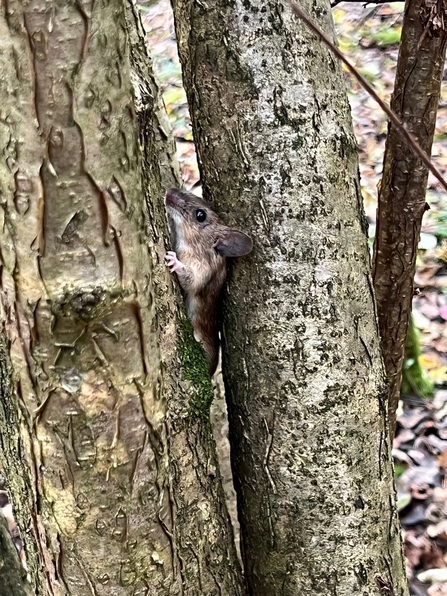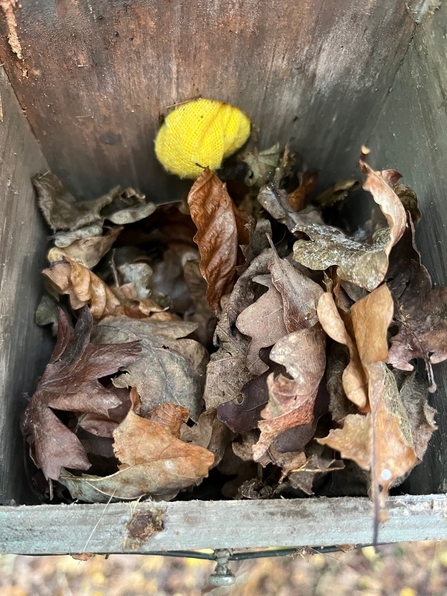I may no longer be a trainee, having moved onto a role with Worcestershire Wildlife Consultancy, but I recently joined the current conservation trainees at Little Monkwood, a section of Monkwood nature reserve, as part of my training to be a licensed dormouse handler. In preparation for next year's breeding season, we were checking, cleaning and repairing nest boxes under dormouse expert Andy Bucklitch’s supervision. The repaired boxes will be put back out in the wood in time for the dormice to find them as they come out of their hibernation in the spring.
You never quite know what you are going to find when you’ve placed your bung in the back of a box and tentatively slid the lid open. As expected at this time of year, any dormice in the wood were all probably now in their hibernation nests, safely tucked up for the winter. Dormice snuggle up for winter at ground level, which is one of the reasons it's important to stick to paths and keep your dog on a lead at all times of year.



